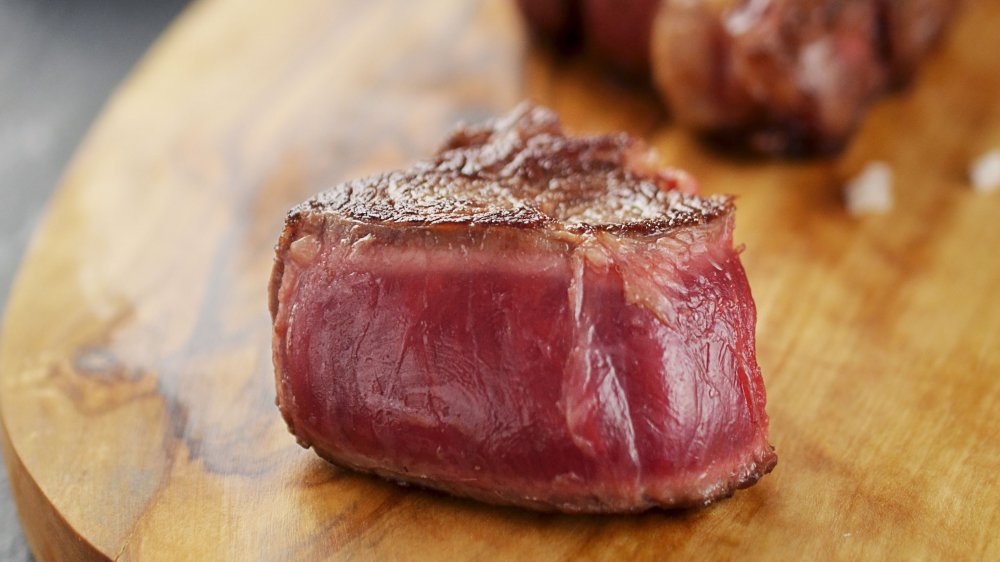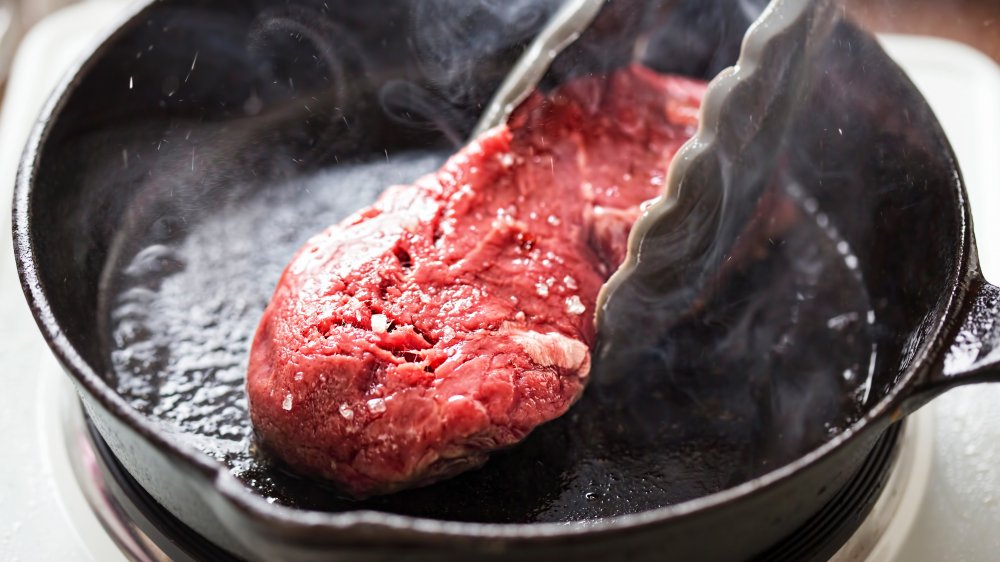Is It Safe To Eat A Blue Steak?
Anybody who enjoys eating a good steak certainly has a preference for how they like it cooked. While ordering a steak well-done may be sacrilegious because it robs the steak of its natural juices, at the other end of the steak spectrum is the blue steak (via The Spruce Eats). Also known as simply ordering a steak "extra rare," a blue steak is just shy of serving the cut of beef raw (via Char-Griller). If you're ordering a blue steak, it's most certainly not getting to know the grill for too long, and the interior temperature probably isn't much higher than 115 degrees Fahrenheit.
While a steak that's barely been kissed by the grill might be appealing to some carnivores, is it safe to eat?
The secret to cooking a blue steak safely
Nobody wants a good steak dinner ruined with a trip to the emergency room because of E. coli poisoning. As for whether or not it's safe to eat blue steak, the short answer is a resounding "yes" — and here's why. Scientists at the University of Nottingham conducted a steak test to determine if eating a steak spiked with E. coli bacteria would result in the bacteria still hanging around when the meat was cooked rare (via BBC). What they found was that while there was still bacteria present in the steaks after the cuts came off the grill, they found that it was because of the serving tongs — and not the short time on the grill. When sterilized tongs were used to turn the blue steaks, no E. coli was detected in the meat.
If you've been to a steakhouse lately, you may have even noticed your steak coming out a little more rare than you had requested. The New York Post reported that some steakhouses have started cooking steaks rare, even when they were ordered medium-rare, simply because less meat ultimately gets tossed in the trash. "If a customer says their steak is overcooked, it can only be thrown out," restaurateur Stephen Hanson said. A wasted steak is a pure disrespect to that cow that gave its life for your New York strip.
To be on the safe side, it's recommended that you use a meat thermometer to check the internal temp of that porterhouse you're grilling up, and if you want it blue, maybe swap out those tongs before you flip it.

